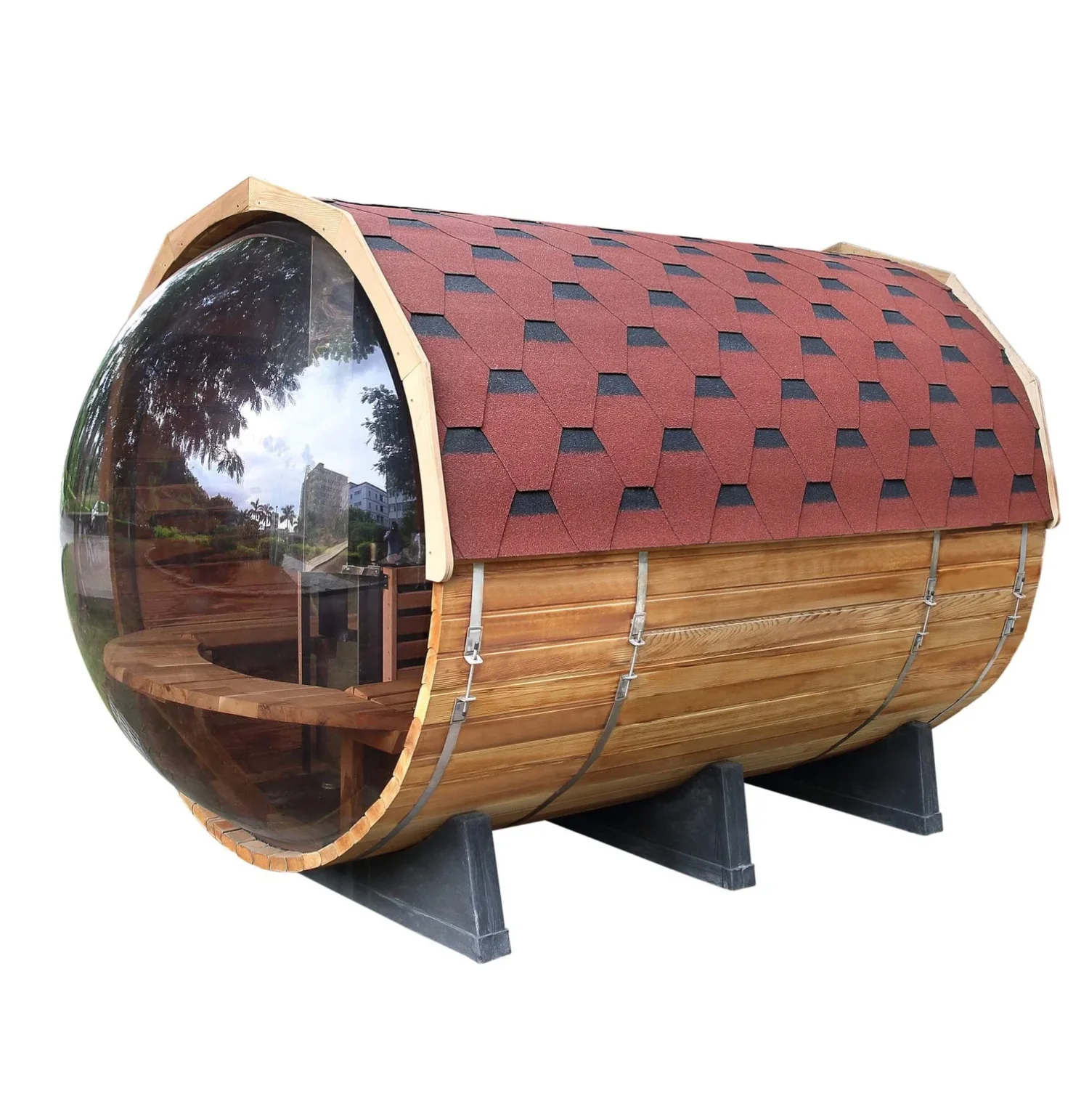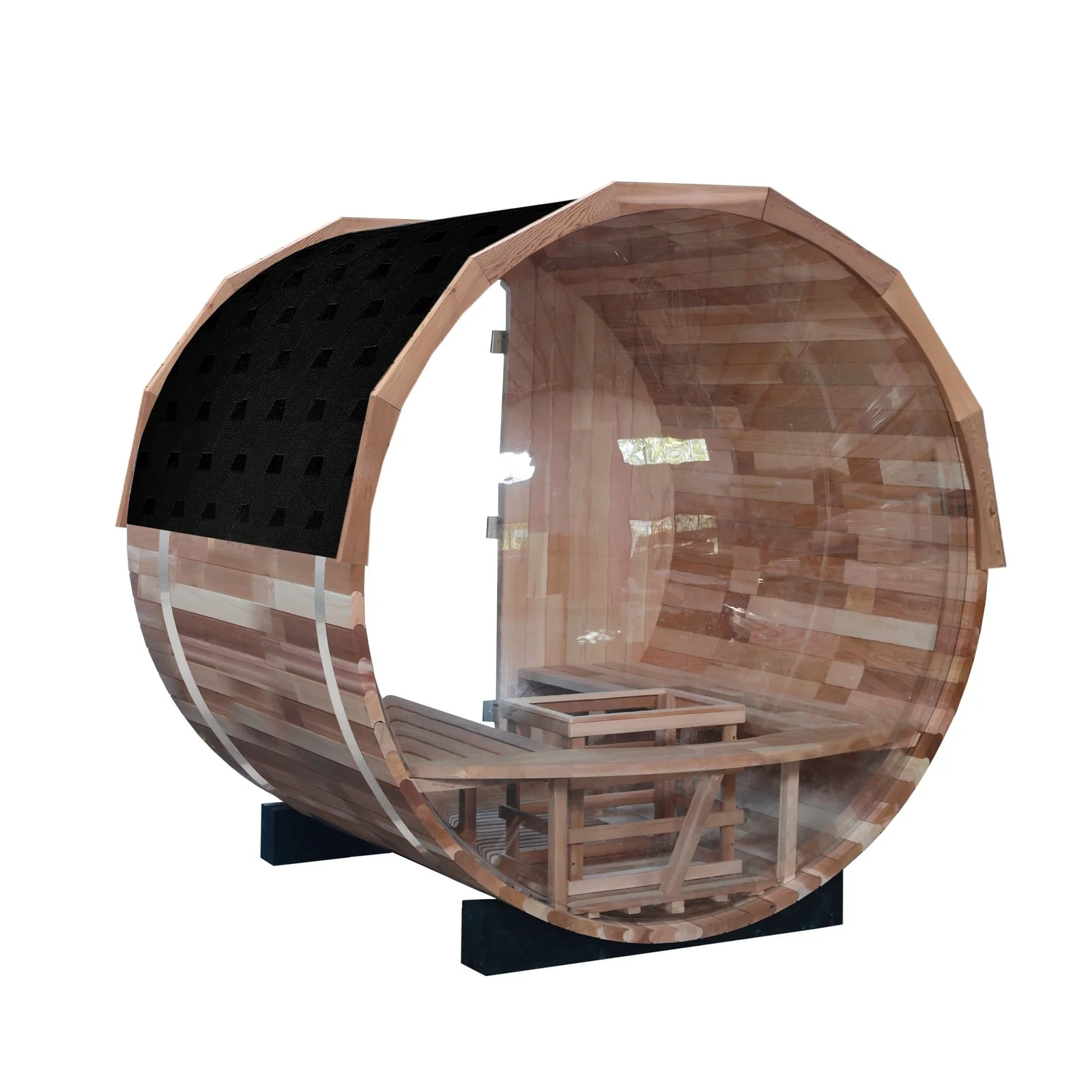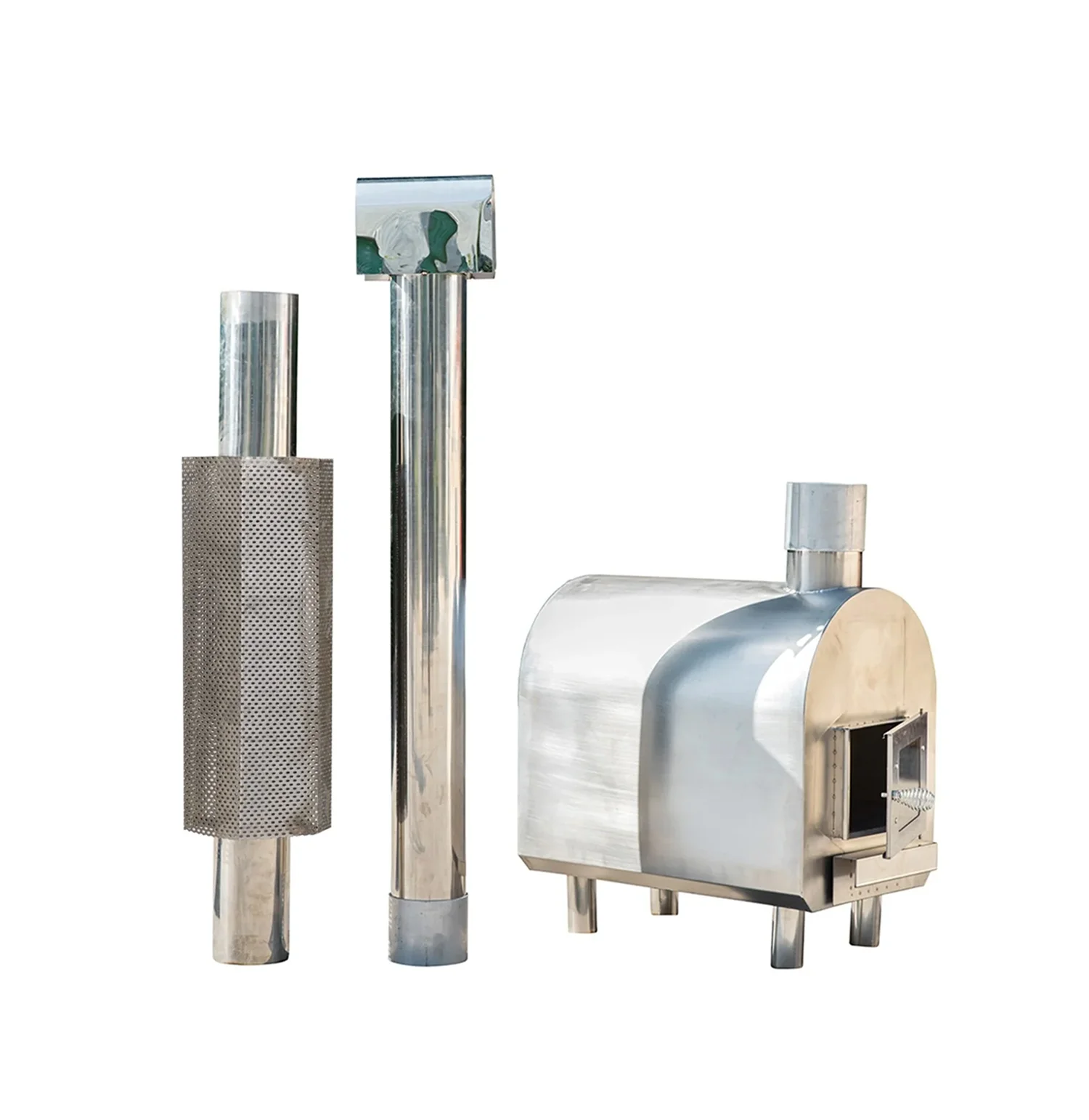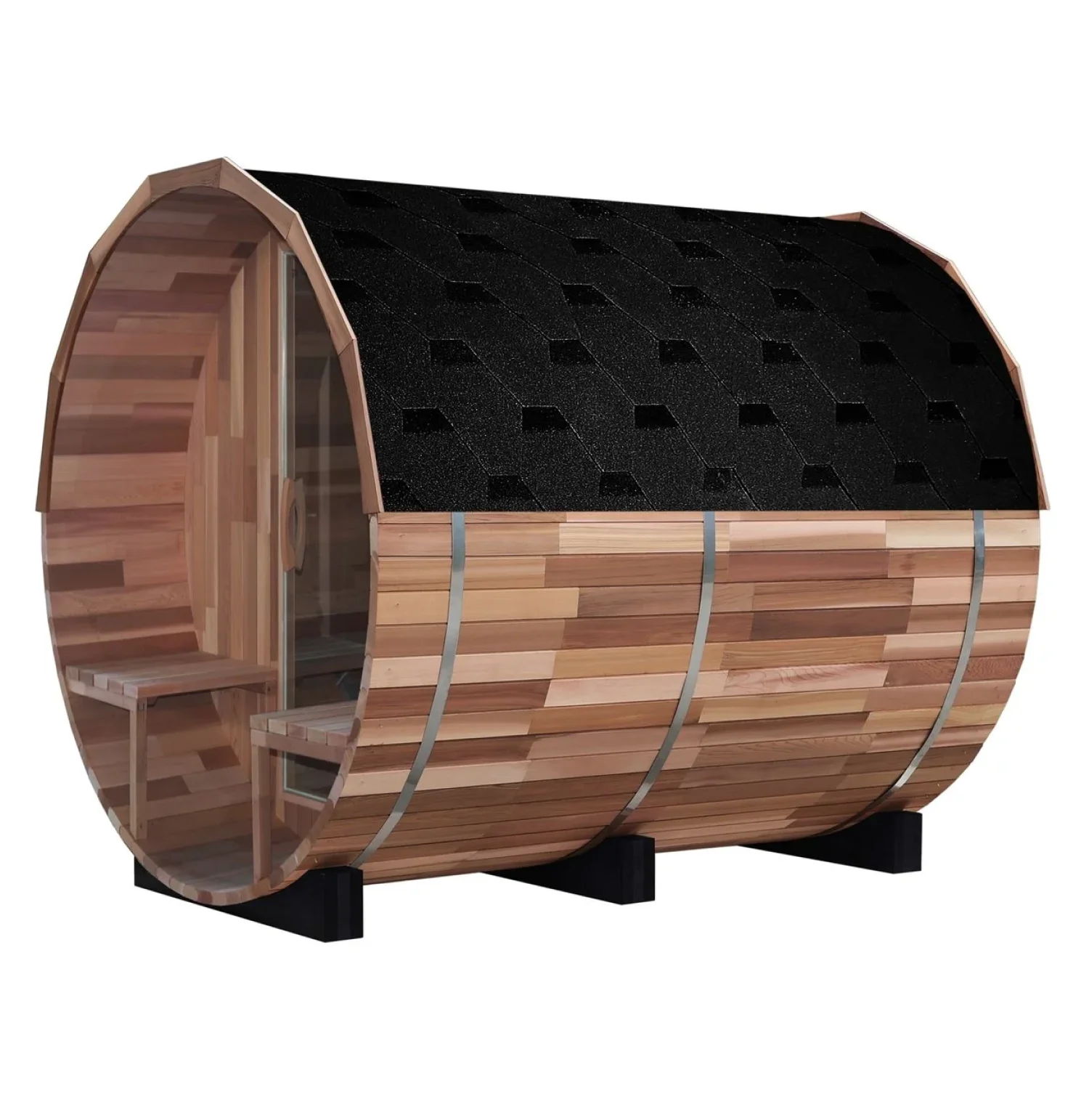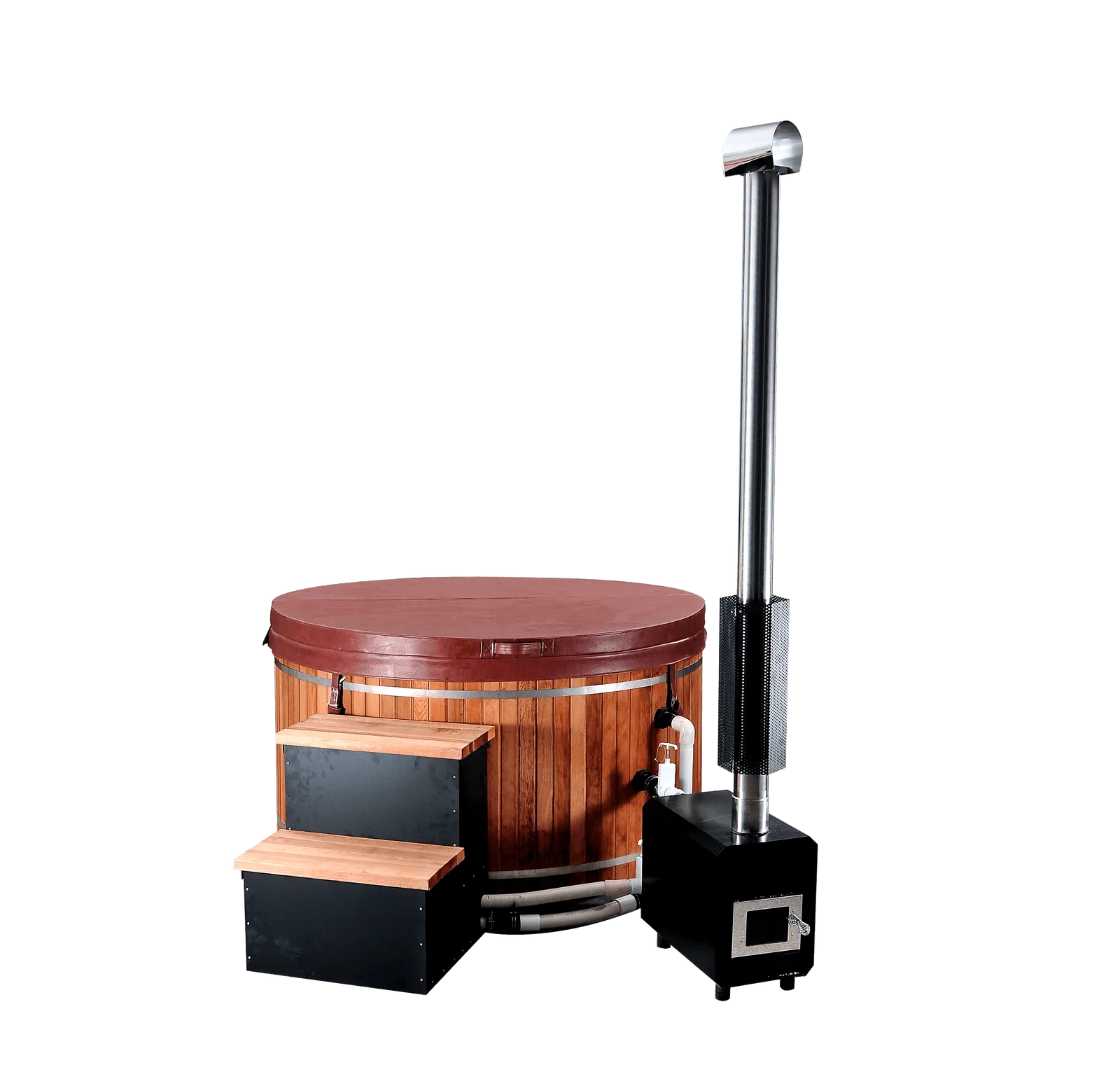Sitting in a sauna does have an impact on your calorie burn, but how much you will lose will depend on various factors, including your overall health and the type of sauna (i.e. steam room/ wet sauna, dry/ traditional sauna, or infrared sauna) among others.
Are you curious about the amount of calories burned in a sauna? How much weight can you lose sitting in a sauna for 10, 15, 20, 30, or 45 minutes? Learn how saunas can help in slimming down your waist here!
Quick answer: In a 30-minute dry sauna session, most sources estimate you’ll burn about 210–290 kcal (plus water loss). In an infrared sauna, estimates go higher (up to ~ 300–500 kcal), though evidence is limited.
This blog will delve into how these numbers come about. We will also provide you with helpful tips for maximizing calorie burn in a sauna, along with sauna safety and hydration tips.
Unlock the secret to a healthier lifestyle with Shym Saunas. Discover our innovative sauna solutions today to assist in your wellness journey! Get a free quote now.
Does sitting in the sauna burn fat? Does infrared sauna use burn calories?
To answer these questions, let us first look into the basics of how the body burns calories by discussing the sweating process and sauna mechanisms.
NOTE: Dropping pounds isn’t just about what you eat or how often you hit the gym. It’s also about your overall health and the habits you’ve built over time. But for now, let’s zero in on a specific slice of the weight loss pie: the role of sweating it out in a sauna.
At the heart of weight management and energy balance lies the process of how our bodies burn calories. This is predominantly governed by our metabolic rate, notably referred to as the Basal Metabolic Rate (BMR).
BMR is the cornerstone of our energy expenditure, representing the minimum amount of energy required to keep our body functioning while at rest. This includes maintaining core body temperature, supporting the function of vital organs, and ensuring cellular processes run smoothly.
In essence, our metabolic rate is a measure of how efficiently our bodies use energy for these basic functions. Individuals with a higher metabolic rate consume more energy at rest and during physical activities, which means they need to intake more calories to maintain their current weight.
Conversely, those with a slower metabolism burn fewer calories both at rest and in motion, necessitating a lower caloric intake to avoid weight gain.
While sitting in a sauna does burn some calories, it’s not a substantial amount and certainly not a stand-alone solution for weight loss or fat reduction.
Using a sauna can indeed lead to calorie burn, albeit at a modest scale. The process works through an increase in heart rate, blood circulation, blood vessel dilation, and energy expenditure, akin to the effects observed during mild exercise. This, in turn, elevates your metabolic rate so that you can start burning calories.
A well-cited study measured energy expenditure during four 10-minute dry sauna exposures (with 5-minute breaks). The results:
~73 kcal in the first 10-minute session
~134 kcal in the fourth session
In some participants, 10-minute bursts reached up to 153 kcal in extreme cases
For calories burned for 15 minutes, 20 minutes, or 30 minutes, you can extrapolate or speculate on the calories you may be able to burn. But again, there are a lot of factors to consider to know the calories you’ve burned. And, of course…
Incorporating sauna sessions into your weight loss and health routine can offer benefits, including some calorie burning. Still, it’s crucial to understand that this should not replace traditional methods of maintaining a healthy lifestyle, such as regular exercise and a balanced diet.
While sauna sessions can contribute to an enhanced calorie-burning regime, they should not be viewed as a standalone solution for weight loss. Saunas can be seen as a supplementary activity that may enhance your overall health and potentially contribute to weight loss efforts, particularly by providing a modest boost in calorie expenditure.
Sauna use offers additional health benefits beyond calorie burning, making it a valuable component of a well-rounded health and fitness routine when used appropriately.
There are two major ways in which a sauna can burn calories: increasing your metabolic rate and losing water weight.

The heat from the sauna elevates your heart rate and metabolic rate, akin to the effects experienced during a light cardiovascular workout. This process can lead to significant calorie burn, with saunas, especially infrared saunas, increasing metabolic rates by up to 30%.
Using a sauna for weight loss primarily results in the loss of water weight. When you indulge in a sauna session, especially an infrared one, your body sweats profusely. This process leads to the loss of some of your body’s hydration, enabling a quick but temporary weight reduction—potentially up to 5 lbs in a well-hydrated individual.
Thus, the immediate weight loss observed post-sauna session is primarily due to water weight loss, not fat loss. Consequently, the weight can quickly return once you rehydrate.
Despite the immediate gratification of seeing lower numbers on the scale post-sauna, this method doesn’t offer a sustainable path to fat loss. It’s essentially a quick fix, suitable for certain short-term goals, such as fitting into an outfit or meeting a specific weight for an event.
This question is more complex than it appears, as several factors come into play. It’s crucial to understand that the figures you get from sauna calorie-burning calculators are just estimates and can vary significantly from one individual to another.
The most accurate way to gauge the impact of a sauna session on calorie expenditure is by monitoring one’s heart rate. This method provides a more tangible measure of the body’s response to the heat and, by extension, the potential calorie burn.
NOTE: Always consult with a healthcare or fitness professional before incorporating sauna sessions into your wellness routine, especially if the goal is weight loss or improving physical fitness.
A higher body weight and lower heat tolerance can increase the calorie burn rate. Healthier individuals also tend to lose fewer calories in saunas compared to less healthy or overweight people.
But, calculating the exact calories burned in a dry sauna will depend on factors such as:
Saunas can come in different types, including the following:
Are infrared saunas better for burning calories than traditional saunas?

Source: Pixabay
When deciding between a traditional sauna and an infrared sauna, the choice often boils down to the specifics of how they operate and the benefits they offer, particularly in terms of calorie burning.
Traditional saunas work by heating the air around you, creating a hot environment that encourages sweating and, to some extent, calorie expenditure.
In contrast, infrared saunas utilize a direct heat approach, employing infrared light to penetrate the skin more deeply and elevate the body’s core temperature more efficiently. The deeper penetration of infrared rays into the body’s tissues is believed to enhance metabolic activity, potentially enabling the body to burn calories at a higher rate.
The distinct heating mechanism of infrared saunas means they might offer a more potent calorie-burning potential compared to their traditional counterparts.
Some proponents suggest that this can lead to significantly higher calorie burn in an infrared sauna, even proposing that users can burn up to 10 times more calories than in a traditional dry sauna.
However, it’s important to note that while these claims highlight the possible advantages of infrared saunas for those looking to increase their calorie expenditure, scientific research is still ongoing to fully validate these assertions.
How many calories are burned in a 180-degree sauna?
(NOTE: Traditional saunas have a heating temperature of approximately 180 degrees Fahrenheit or 82.22 degrees Celsius, but can vary in heat and humidity.)
The controlled study had participants sit through four separate 10-minute dry sauna sessions (at ~ 90 °C, 14–16% humidity) with cooling breaks. The calories burned per 10-minute session were approximately 73, 94, 115, and 131 kcal, respectively.
Based on that data, a 30-minute sauna session—whether done continuously or broken with rests—might burn ~210–260 kcal. Some wellness sources push that estimate to 300–350 kcal, but those figures are optimistic and not as well-grounded in measured trials.
Another study using dry sauna (3 × 20 min at ~70 °C) focused on rapid water loss and performance, not calories—again reinforcing that immediate scale drops are largely fluid, not fat.
Precise calorie-burning numbers for infrared saunas aren’t well established. High-quality trials that directly measure energy expenditure in infrared settings are limited, so most figures online are estimates, not lab-measured results.
Because infrared caloric data are sparse, you’ll see ranges like ~50 to ~300–500 kcal in 30 minutes repeated in wellness media. Treat these as rough, unverified estimates until better infrared-specific calorimetry is published. Health experts also caution that any short-term “weight loss” from saunas is dehydration and will return once the person hydrates again.
Neglecting to stay properly hydrated while soaking up the heat in a sauna isn’t just unhealthy; it can actually backfire on your weight loss goals. Keeping your body hydrated is crucial when you’re trying to lose weight for good.

Water plays a key role in metabolizing stored fat and helping your body flush out toxins. So, skipping on sipping water in these steamy situations could be counterproductive, making it harder for your body to let go of those extra pounds.
Moreover, ensuring proper hydration is paramount when engaging in sauna sessions, given the significant fluid loss experienced through sweating. To safeguard against dehydration and its detrimental health effects, adhering to the following safety considerations and best practices is essential:
Related: How Long To Wait To Eat After Sauna?
The time you spend in a sauna can influence how many calories you burn, but it’s important to balance this with safety and health considerations. Generally, most health experts recommend sauna sessions of around 15 to 20 minutes.
Never exceed 20 minutes in one session, especially if you’re new to sauna use.
It’s crucial to listen to your body and exit the sauna if you feel dizzy, uncomfortable, or overheated. Regarding the frequency, regular use can contribute to overall calorie expenditure, but make sure to allow your body to rest and recover.
When comparing saunas to active exercise, the difference is clear: exercise generally burns more calories, offers more systemic benefits, and drives lasting adaptation in muscles and metabolism. Saunas can contribute a mild metabolic boost, but they’re not a substitute for movement.
Walking briskly for 30 minutes can burn ~120–180 kcal (depending on body weight and pace).
For example, a 140-lb (≈ 64 kg) person walking moderately might expend ~ 4 kcal per minute, totaling ~ 120 kcal in 30 minutes.
Other moderate workouts (cycling, jogging) often burn 200–300 kcal or more in 30 minutes, depending on intensity and your physique.
Muscle stimulation & adaptation — Exercise applies mechanical load, triggers hypertrophy, and improves strength, which saunas don’t.
Cardio and metabolic conditioning — Sustained exercise trains the heart, lungs, and metabolic systems; sauna effects are secondary.
Afterburn / EPOC (Excess Post-exercise Oxygen Consumption) — Some exercise modalities lead to elevated calorie burn after the activity ends, while saunas do not.
Risk & sustainability — Frequent saunas carry dehydration risks if misused; exercise has more consistent, safer protocols.
So, view saunas as a supplement — helpful for recovery, circulation, or small metabolic boosts — but not a replacement for walking, cycling, strength training, or other active movement in your weight-loss strategy.
In wrapping up, leaning on saunas for weight loss might seem like a quick fix, but it’s not the wisest choice, especially when quick results are sought for events or fitting into that special outfit. True weight loss and maintaining it hinge on steady, healthy habits, steering clear of the allure of instant solutions which often fall short of their promises or harm your health in the long run
But one thing is for sure – the multitude of health benefits offered by saunas, like Shym Saunas, beyond calorie burning is undeniable.
While there’s no one-size-fits-all formula, calorie burn in a sauna can be estimated using factors like sauna type, session duration, and individual metabolic rate. Infrared saunas, for example, might burn calories differently compared to traditional steam saunas due to the way they heat the body.
While sauna use can contribute to weight loss, it should not be relied upon as the sole means of shedding pounds. Take note that the weight loss experienced during a sauna session is primarily due to water loss, not fat loss. However, you can use saunas to complement your weight loss efforts paired with a healthy diet and regular exercise.
Yes, using a sauna comes with certain risks such as dehydration, especially if not used properly or with caution. To mitigate these risks, it’s advisable to limit sauna sessions to 15-20 minutes, stay hydrated, avoid alcohol before and after sauna use, and always listen to your body, stepping out if you feel uncomfortable or ill.
Individuals with pre-existing health conditions or concerns should consult a healthcare provider before incorporating sauna sessions into their routine.
